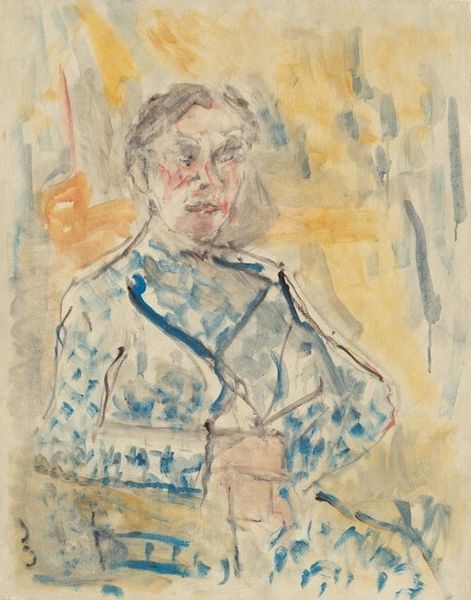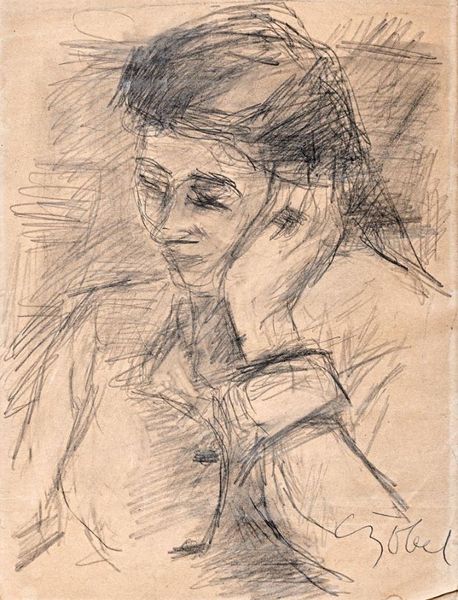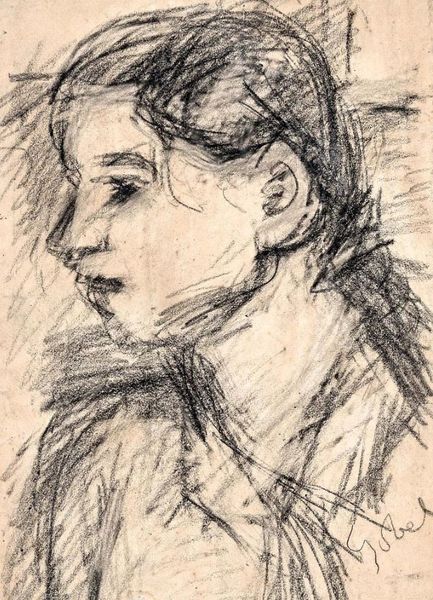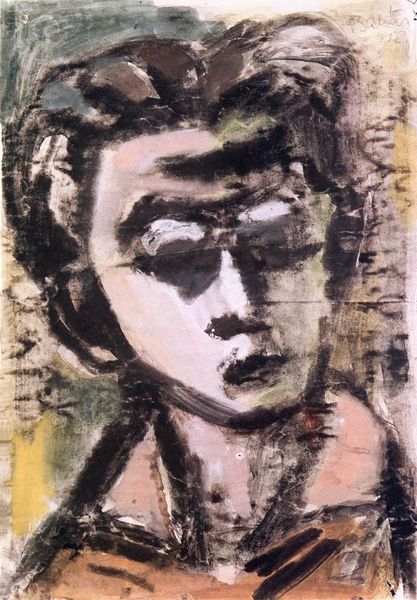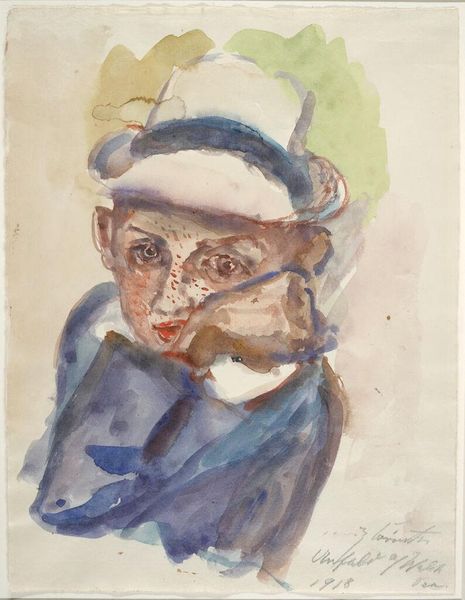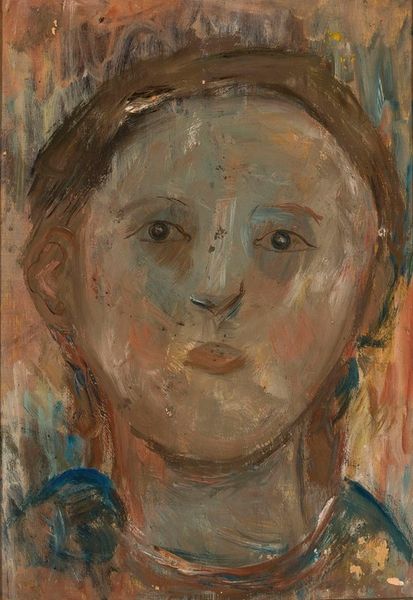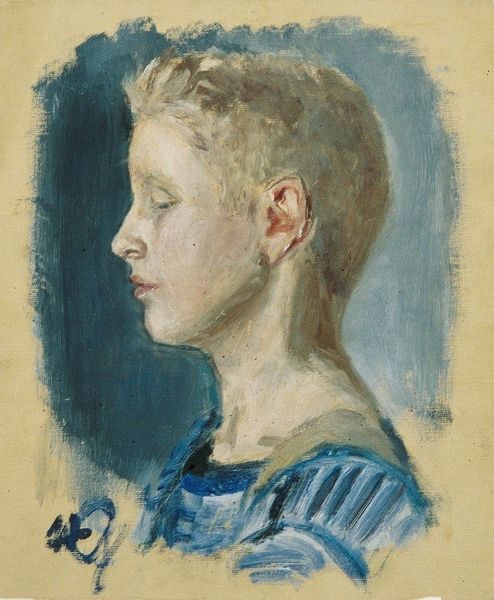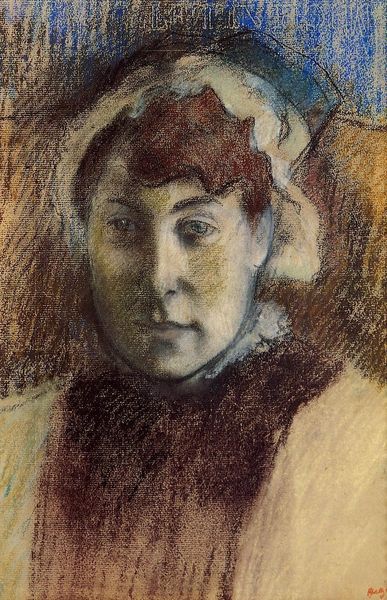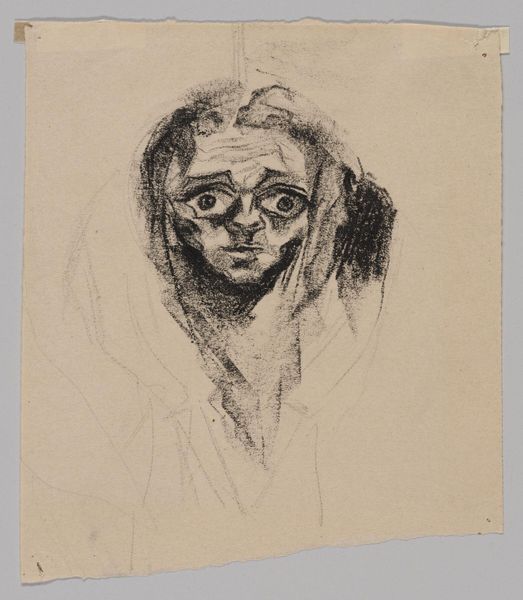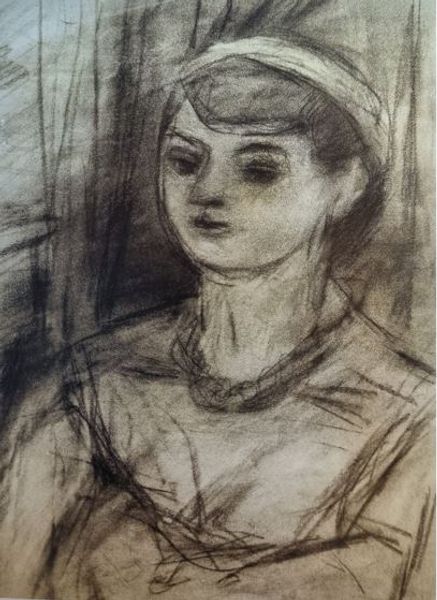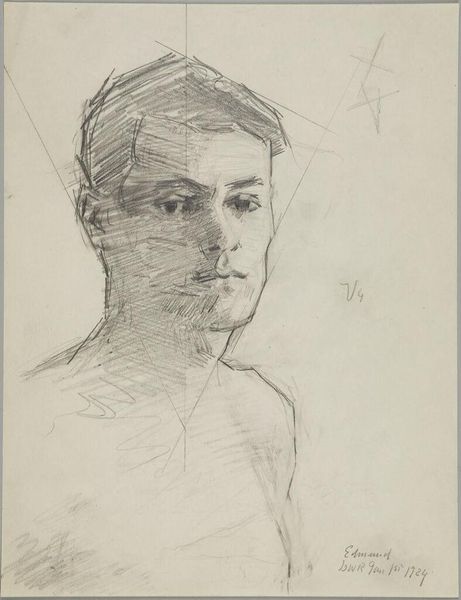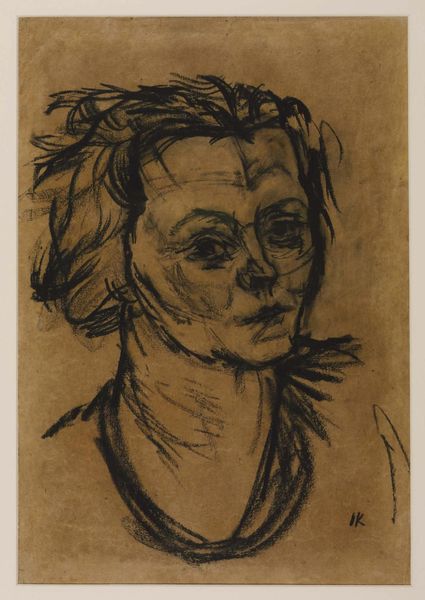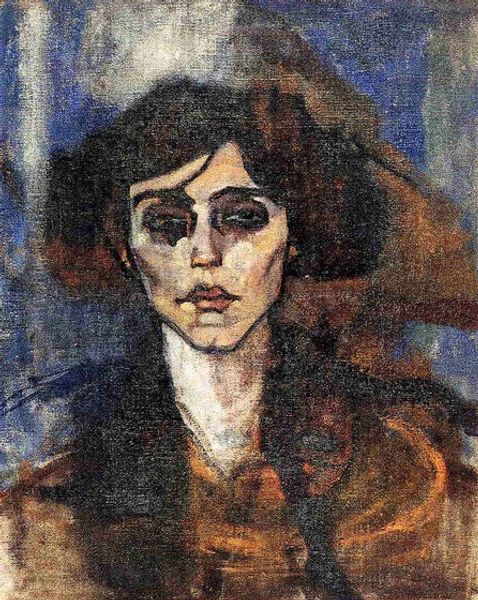
drawing, pencil, graphite
#
portrait
#
drawing
#
pencil
#
expressionism
#
graphite
#
modernism
Copyright: George Bouzianis,Fair Use
Editor: Here we have George Bouzianis’s "Portrait" from 1927, rendered in pencil and graphite. The application feels almost feverish, creating a somewhat haunting atmosphere. What strikes you most about this drawing? Curator: Well, I'm immediately drawn to the raw materiality of it. Look at the visible strokes, the deliberate layering of graphite and pencil. It's not just about depicting a likeness, it's about the physical act of creation. What was the availability of drawing materials like in Greece at this time? Was Bouzianis consciously rejecting more refined academic techniques in favor of a more immediate, hands-on approach that speaks to a broader segment of the population? Editor: That's an interesting point. I hadn't considered the context of material access. Do you think his expressive style might also reflect broader social anxieties of the period? Curator: Absolutely. Think about the socio-political climate in Europe after World War I, particularly the rise of industrialization and its impact on labor. This portrait, with its almost frenetic energy, can be read as a commentary on the alienation of the individual within that system. He may be using these "cheap" drawing material as the mean for depicting such social tensions. Editor: So, you're saying the choice of materials and technique is inseparable from the social and political realities of the time? Curator: Precisely. The roughness isn't accidental; it's a statement. Bouzianis isn't just making art, he’s engaging in a material dialogue about production, labor, and even consumption by employing what's available to him and using materials more common than refined. It challenges the high/low art dynamic. Editor: This has totally changed my perspective. I was so focused on the mood of the portrait, I completely missed the social implications embedded in its making. Thank you. Curator: It’s a vital part of the reading, understanding the process reveals a world of possibilities in understanding a work of art.
Comments
No comments
Be the first to comment and join the conversation on the ultimate creative platform.
